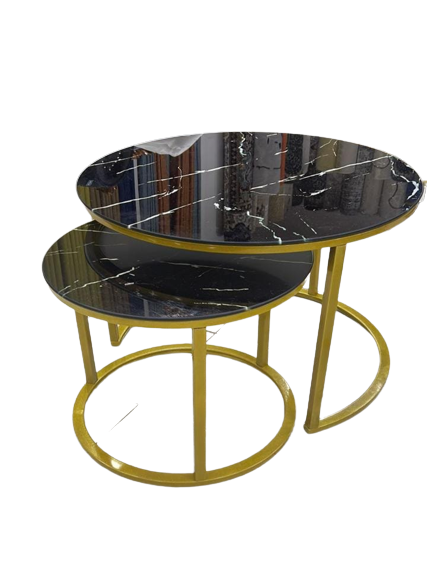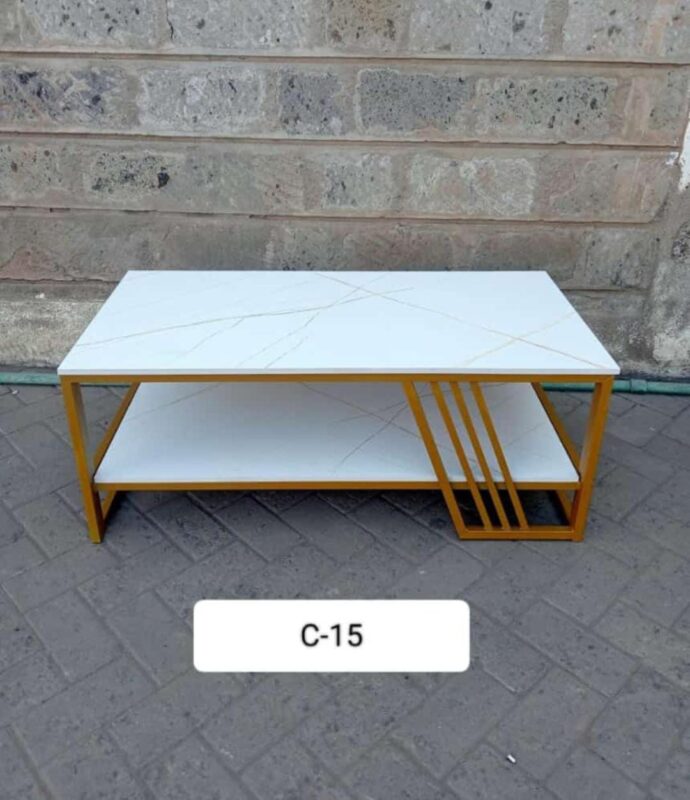Picking the Perfect Coffee Tables For Your Living Space

Introduction
The coffee table has evolved beyond its humble beginnings to become a quintessential element in modern living spaces. With its origins tracing back to the late Victorian era. Initially, these tables were lower than traditional dining tables, designed to complement the height of sofas and chairs in parlors and sitting rooms. Over time, the coffee table has evolved in design, material, and functionality, adapting to the changing tastes and lifestyles of different eras. Modern coffee tables come in many styles, including minimalist, industrial, rustic, and contemporary, reflecting diverse design preferences.
No longer merely a practical surface for holding beverages and snacks, the coffee table has transformed into a pivotal piece of living room furniture that can significantly enhance the aesthetic and functionality of a space. In today’s interior design landscape, the coffee table serves a dual purpose: it is both a practical utility and a stylish décor element that can tie the room together seamlessly. The importance of a coffee table in contemporary living rooms cannot be overstated.
As we delve deeper into the world of coffee tables, we’ll explore the myriad roles they play, the diverse types available, and the customization options that allow you to tailor this essential piece to your unique taste and needs. Whether you’re looking to upgrade your current living room table or seeking inspiration for a complete redesign, understanding the full potential of a coffee table can elevate your living space to new heights.
What is a Coffee Table

A coffee table is a versatile piece of living room furniture that serves both functional and aesthetic purposes. Typically positioned in front of a sofa or seating arrangement, a coffee table provides a convenient surface for placing drinks, snacks, books, and decorative items. Its primary function is to offer a practical space within easy reach of seated individuals, facilitating leisure activities such as reading, socializing, and enjoying refreshments.
Beyond its utility, a coffee table serves as a vital decorative element that can enhance the overall aesthetic of a living room. It acts as a centerpiece that ties together various elements of the room’s décor, such as rugs, sofas, and lighting. By carefully selecting a coffee table that complements the existing furniture and design scheme, one can create a cohesive and inviting living space. Additionally, coffee tables often feature storage solutions, such as shelves or drawers, providing an added functionality layer without compromising style.
Here are some benefits of thoughtfully choosing and arranging your coffee table:
- Enhances room functionality by providing a central spot for items
- Adds aesthetic value to your living space
- Provides additional storage options
Types and Styles of Coffee Tables in Kenya
The Kenyan market offers a rich array of coffee tables, each bringing its flair to your living room furniture. Whether your style is traditional, rustic, modern, or industrial, there is a coffee table in Kenya to suit your needs. The versatility in materials and designs allows you to elevate your living space, making the coffee table not just a functional piece, but a focal point in your home.
- Wooden coffee tables – One of the most popular choices is wooden coffee tables. These tables often come in oak, mahogany, or teak, exuding a warm and inviting ambiance. Wood is cherished for its durability and classic appeal, making it a staple in traditional and rustic interior designs.
- Glass coffee – For those who lean towards a contemporary aesthetic, glass coffee tables are a compelling option. These pieces often feature sleek, minimalist designs that can make a small living room appear more spacious. Glass tables are versatile and pair well with various materials like metal or wood, offering a balanced look that suits modern interiors. A prime example of this can be found on skywave.co.ke, where an assortment of glass coffee tables with metal or wooden frames are available.
- Marble coffee tables – They are another luxurious option, adding an element of sophistication to your living room. The natural stone’s unique veining ensures that no two marble tables are the same, making each piece a work of art. These tables are perfect for those looking to add a touch of elegance and are often seen in more opulent or contemporary settings.
- Metal coffee tables – On the other hand, are ideal for industrial or modern living spaces. They are known for their sturdiness and often feature bold, geometric designs. Metal tables can be found in various finishes, from matte black to polished chrome, offering a range of options to match your interior decor.
Nesting tables have also made a significant comeback. These versatile pieces consist of two or more tables that can be stacked together or used separately, offering flexibility and functionality. They are ideal for smaller spaces, allowing for additional surface area when needed and compact storage when not in use.
A growing trend in Kenya is the customization of coffee tables. Many homeowners prefer to take a specific design to a local carpenter, who can craft a unique piece tailored to their exact specifications. This approach not only supports local artisans but also ensures that the coffee table perfectly matches the existing living room furniture.
Tips for Choosing and Arranging Your Coffee Table
Choosing the perfect coffee table can significantly elevate the ambiance and functionality of your living room. When selecting a coffee table, it’s essential to consider various factors to ensure it complements your existing living room furniture and serves your lifestyle needs effectively. These factors include:
1. Space
First, assess the size of your space. A coffee table should be proportionate to the size of your room and other furniture. Ideally, the table should be no more than two-thirds the length of your sofa. This ensures that the table is neither too overwhelming nor too diminutive within the space.
2. Shape
Shape is another crucial factor. Rectangular or oval tables are excellent choices for smaller rooms as they take up less visual space. Round or square tables can work well in larger rooms or with sectional sofas, creating a balanced and cohesive look. Selecting a shape that complements the room’s layout will enhance the overall flow and accessibility.
3. Material
The material also plays a vital role in your decision. Wooden coffee tables offer a classic and versatile look, while glass tables can make a room feel more open and airy. Metal tables provide a modern edge, and upholstered tables add a touch of softness and can double as extra seating or a footrest.
4. Design compatibility
Design compatibility with your existing décor is paramount. A modern coffee table with clean lines and minimalistic features will seamlessly blend with contemporary interiors. In contrast, a rustic or vintage table may suit a more traditional or eclectic setting. It’s important to choose a table that harmonizes with your overall décor to create a cohesive aesthetic.
5. Sustainability
Sustainability is another crucial trend influencing coffee table designs. Eco-friendly options made from reclaimed wood or recycled materials are becoming increasingly sought after. These tables not only reduce environmental impact but also add a unique, rustic charm to any living space. The use of sustainable materials highlights a growing awareness and commitment to eco-conscious living.
6 . Function
Consider the functionality of your coffee table. If storage is a priority, opt for tables with built-in shelves or drawers. These can provide additional space for books, magazines, or remote controls, keeping your living room organized and clutter-free. For those who entertain often, a coffee table with a larger surface area can be ideal for serving snacks and drinks.
When arranging your coffee table, ensure it balances well with surrounding furniture. The height of the table should be roughly the same as the seat height of your sofa to facilitate ease of use. Additionally, consider the flow of the room; there should be enough space to walk around the table comfortably without obstruction. Ultimately, your choice should reflect your lifestyle needs and room layout. A well-chosen coffee table can transform your living room, making it both more functional and visually pleasing.
Conclusion
Choosing the perfect coffee table requires a balance between aesthetics and functionality, ensuring that it complements your living space both in style and practicality. Throughout this guide, we have explored various aspects essential for making an informed decision. From understanding different shapes and sizes to evaluating materials and design elements, each factor plays a crucial role in defining the character and utility of your coffee table.
Ultimately, the perfect coffee table is a blend of form and function, a piece that ties the room together while supporting your everyday activities. With careful consideration and thoughtful selection, your coffee table will become a centerpiece that enhances the comfort and style of your living space. Ultimately, the perfect coffee table is a blend of form and function, a piece that ties the room together while supporting your everyday activities. With careful consideration and thoughtful selection, your coffee table will become a centerpiece that enhances the comfort and style of your living space.



